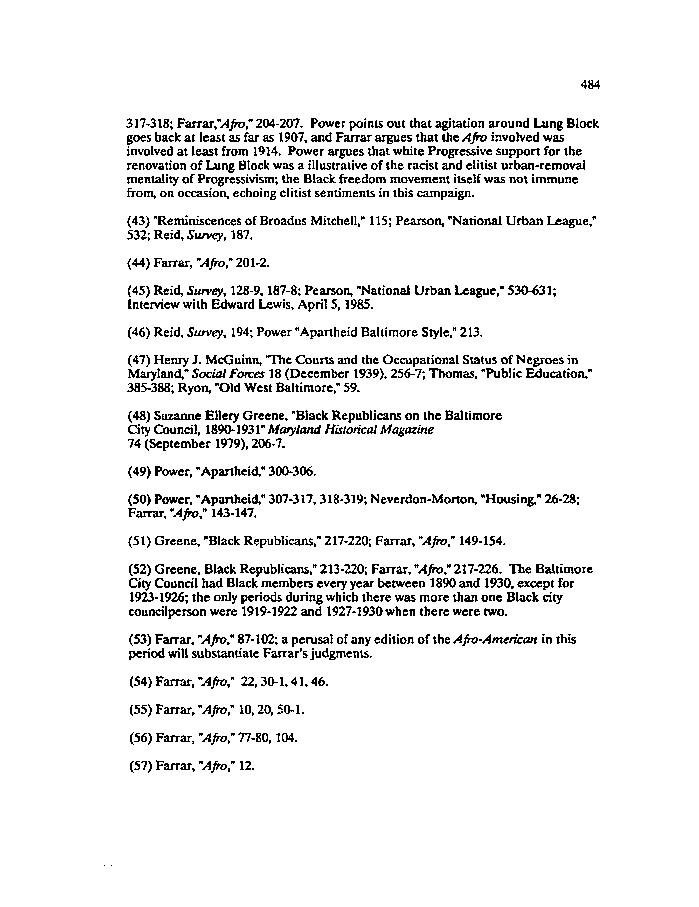|
484
317-318; FarraO4/ro," 204-207. Power points out that agitation around Lung Block
goes back at least as far as 1907, and Farrar argues that the Afro involved was
involved at least from 1914. Power argues that white Progressive support for the
renovation of Lung Block was a illustrative of the racist and elitist urban-removal
mentality of Progressivism; the Black freedom movement itself was not immune
from, on occasion, echoing elitist sentiments in this campaign.
(43) "Reminiscences of Broadus Mitchell," 115; Pearson, "National Urban League,"
532; Reid, Survey, 187.
(44) Farrar, "Afro," 201-2.
(45) Reid, Survey, 128-9,187-8; Pearson, "National Urban League," 530-631;
Interview with Edward Lewis, April 5,1985.
(46) Reid, Survey, 194; Power "Apartheid Baltimore Style," 213.
(47) Henry J. McGuinn, The Courts and the Occupational Status of Negroes in
Maryland," Social Forces 18 (December 1939), 256-7; Thomas, "Public Education,"
385-388; Ryon, "Old West Baltimore," 59.
(48) Suzanne Ellery Greene, "Black Republicans on the Baltimore
City Council, 1890-1931" Maryland Historical Magazine
74 (September 1979), 206-7.
(49) Power, "Apartheid," 300-306.
(50) Power, "Apartheid," 307-317,318-319; Neverdon-Morton, "Housing," 26-28;
Farrar, "Afro," 143-147.
(51) Greene, "Black Republicans," 217-220; Farrar, "Afro," 149-154.
(52) Greene, Black Republicans," 213-220; Farrar, "Afro" 217-226. The Baltimore
City Council had Black members every year between 1890 and 1930, except for
1923-1926; the only periods during which there was more than one Black city
councilperson were 1919-1922 and 1927-1930 when there were two.
(53) Farrar, "Afro," 87-102; a perusal of any edition of the Afro-American in this
period will substantiate Farrar's judgments.
(54) Farrar, "Afro," 22,30-1,41,46.
(55) Farrar, "Afro," 10,20,50-1.
(56) Farrar, "Afro," 77-80,104.
(57) Farrar, "Afro," 12.
|

